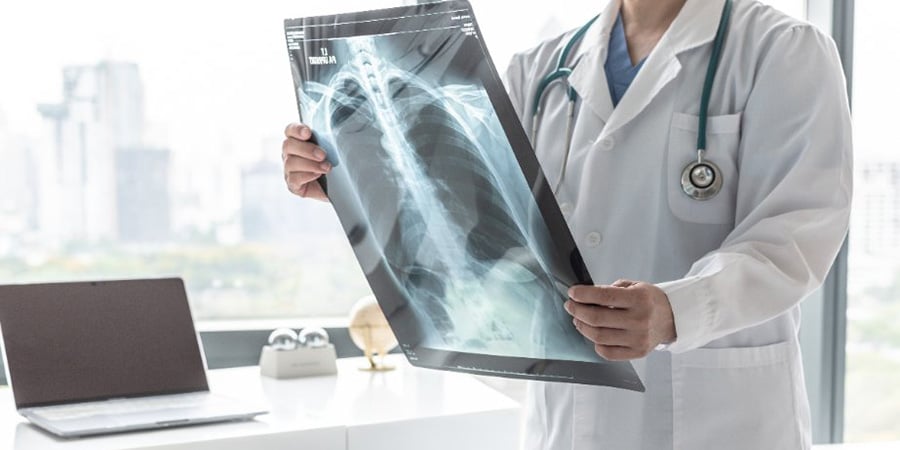
The American Cancer Society estimates there will be over 130,000 lung cancer deaths in the U.S. in 2022. This year, patients, providers and family members around the globe observed World Lung Cancer Day on August 1, which served as an opportunity to learn more about the disease and those affected as well as share resources to educate as many people as possible about risks, symptoms and treatment.
In honor of this national health recognition day, we’ve put together some information to help guide EMS providers on how to perform safe and effective airway management on patients with lung cancer.
Lung cancer risks and symptoms
Lung cancer occurs when cells multiply abnormally in the lungs, forming a malignant tumor and resulting in difficulty breathing. Due to the large size of the lungs, cancerous tumors often go undetected for years.
Although lung cancer can present differently in individual patients, there are common risk factors, including:
- History of smoking
- Exposure to asbestos and other hazardous materials and chemicals
- Exposure to radon gas
- Exposure to secondhand smoke
- Family history of lung cancer
In addition to risk factors, providers and patients should remain knowledgeable about some of the telltale symptoms of lung cancer, which are often not easy to identify until more advanced stages of the disease. These include:
- Tiredness or fatigue
- Persistent cough
- Trouble breathing and shortness of breath
- Discomfort in the chest and surrounding areas
- Coughing up mucus or phlegm
- Coughing up blood (hemoptysis)
Airway concerns
Since the lungs and airway are closely connected, cancer in the lungs can cause significant respiratory complications for patients, particularly elderly patients, who make up the majority of individuals diagnosed with the disease. The airway may often become blocked, leading to severe discomfort and risk of illness or death. The main airway issues associated with lung cancer include the development of nodules (small lumps), fistulas (holes in the airway wall) and other airway obstructions or blockages.
When examining lung cancer patients for airway issues, providers should be on high alert for symptoms of shortness of breath (dyspnea), upper respiratory infections and coughing up blood. Dyspnea is a symptom that often worsens as the disease progresses, and it may be triggered by the growth of a tumor, secondary infection, disease complications or certain cancer treatments. The main symptom of dyspnea is labored breathing, and the severity of shortness of breath may vary based on a person’s physical activity or other health conditions.
When lung cancer cells invade the space between the lungs and chest wall, or the pleural space, it results in a process called pleural effusion, which leads to fluid buildup around the lungs. This buildup makes it harder for the lungs to fully expand and take in enough air, causing significant airway and breathing complications.
Preventing lung infections during airway suctioning
Lung cancer patients are at severe risk for infections as complications from their disease progress. Suctioning can help to prevent infection in lung cancer patients who are suffering from a respiratory emergency, but when performed incorrectly, it can also further contribute to an infection. To avoid causing additional harm to patients’ lungs during airway management, there are a few safety measures providers should always employ when performing airway suctioning. These include:
- Good hygiene: When done carelessly, suctioning can introduce harmful contaminants into the patient’s respiratory tract. To prevent this, always wash your hands before and after suctioning, as well as before and after cleaning any machine components. Always be sure to clean and disinfect the suction machine immediately after use, and never store a dirty machine or dirty machine components near a clean machine.
- Airway safety: Protect the patient’s airway by changing the suctioning technique and catheter size based on the patient’s unique needs, as well as their age, health and body size.
- Storage: Store all suction components in a secure and hygienic location.
Although lung cancer is considered the deadliest form of cancer in the United States, many medical providers are still unaware of the airway complications associated with the disease. However, no two patients are the same, and providers must always remain attentive to each patient’s unique healthcare needs and circumstances during treatment. To learn more about safety measures you and your team should take when performing airway management on lung cancer patients, read SSCOR’s blog on the 6 things you must check every time you use a portable suction device, and check out our roster of hospital and EMS suction products.














